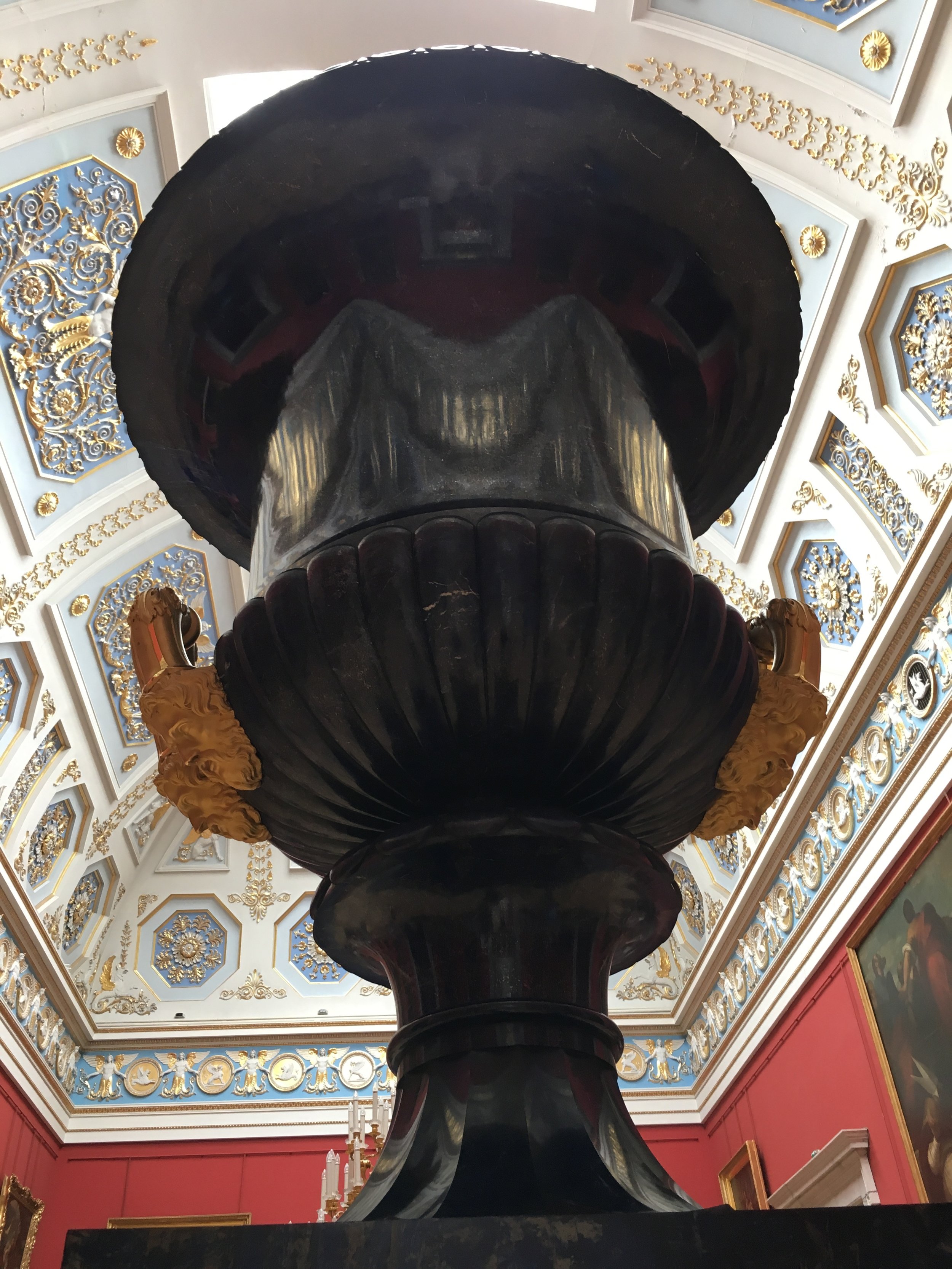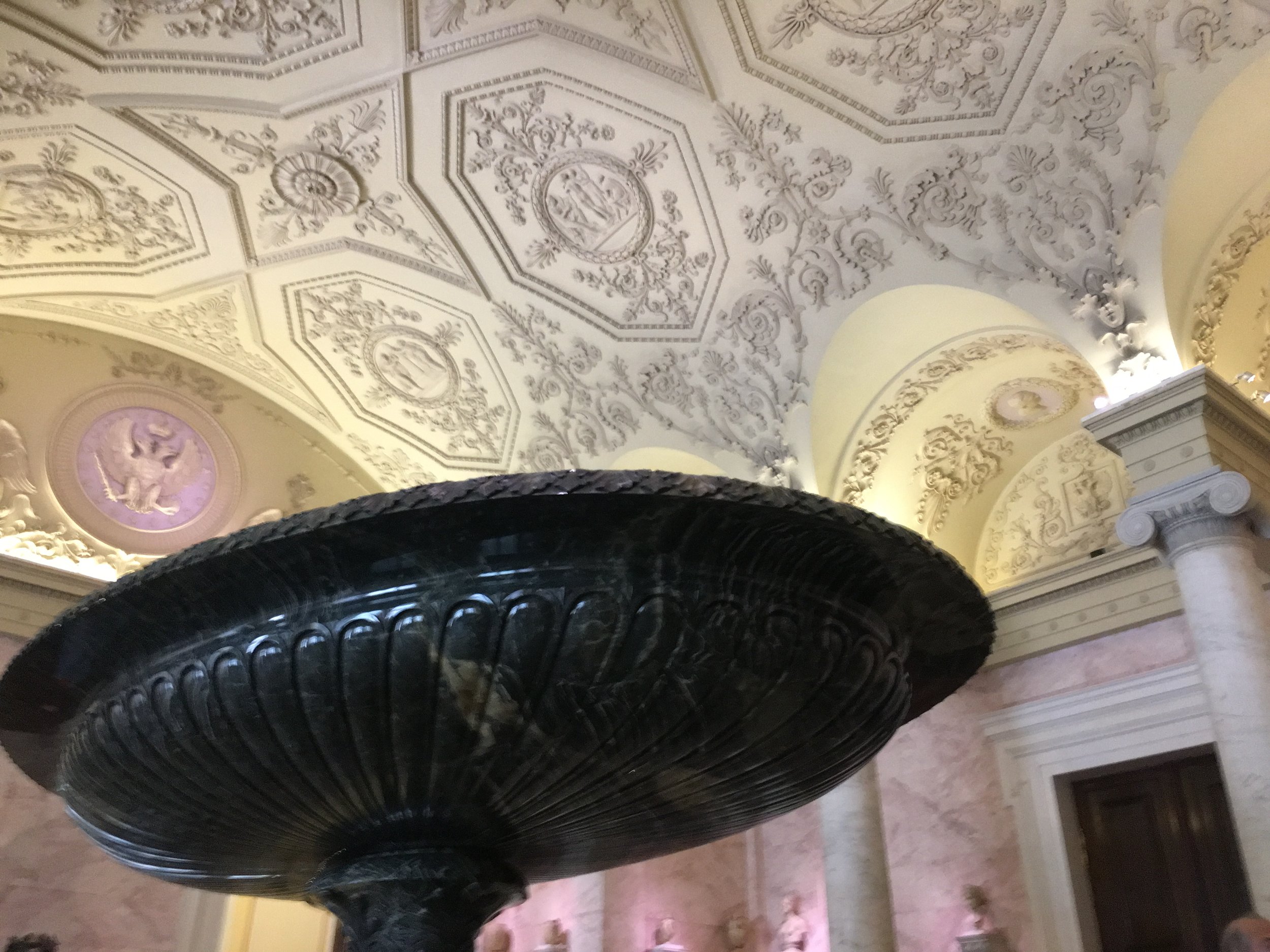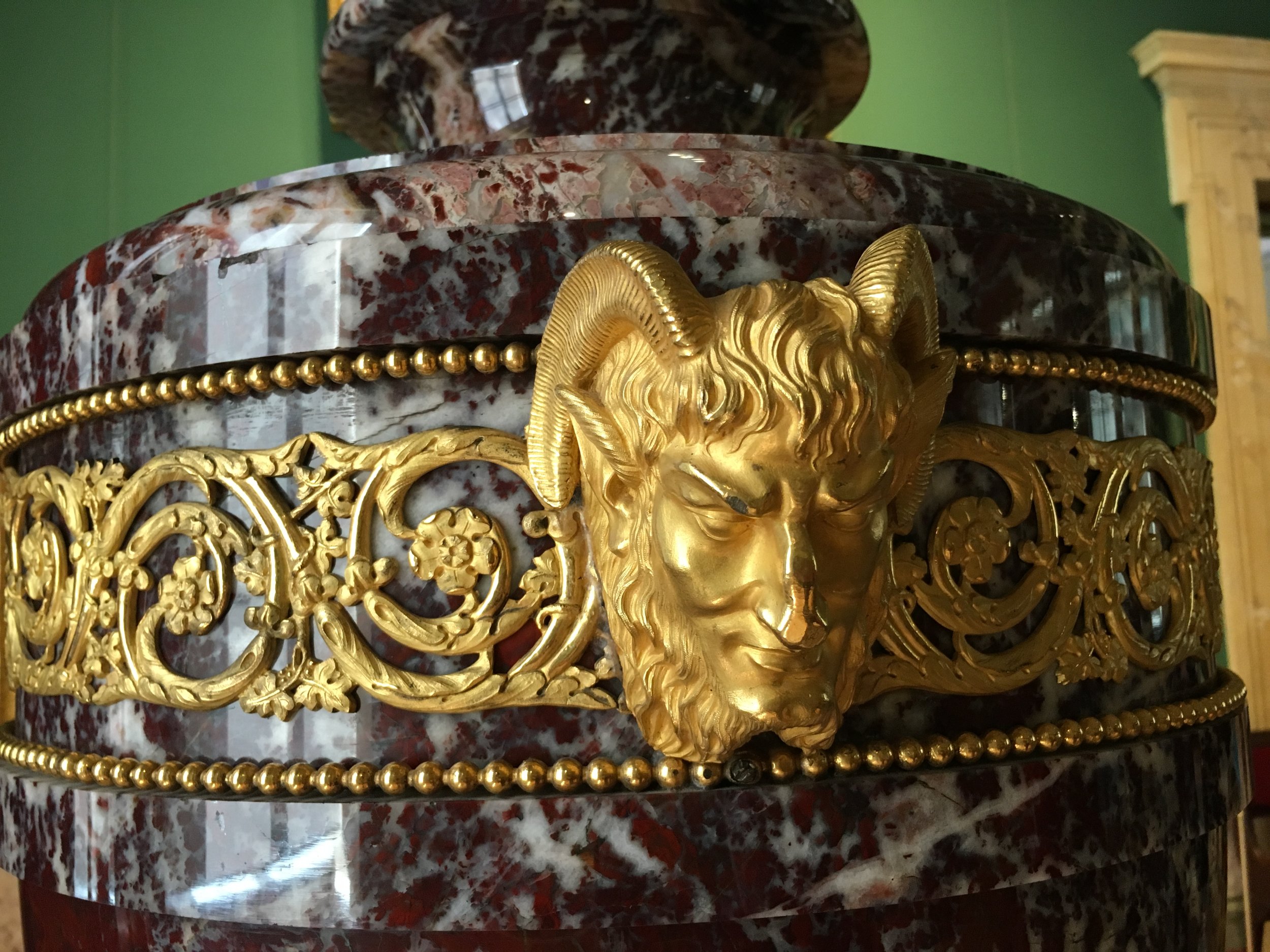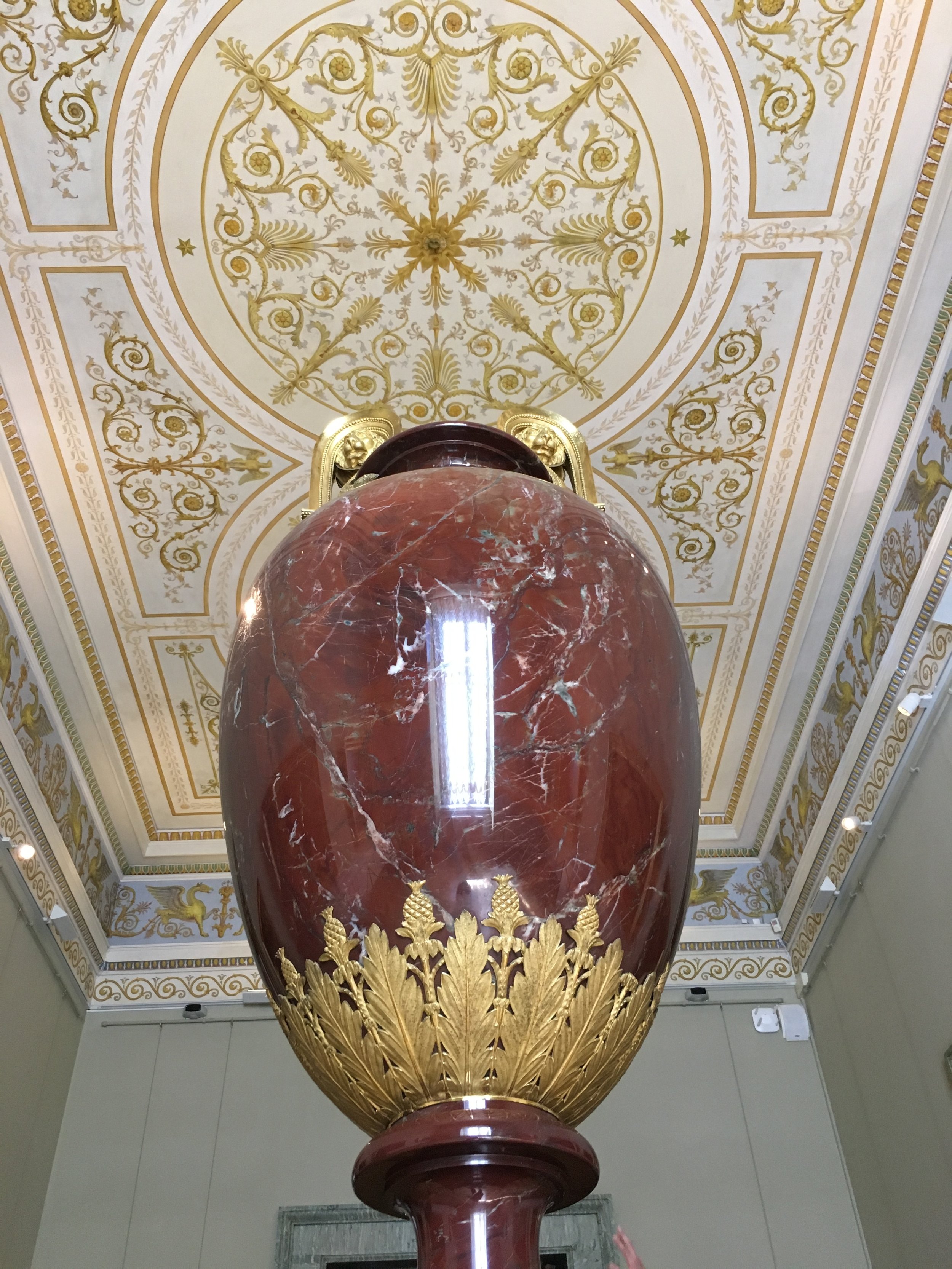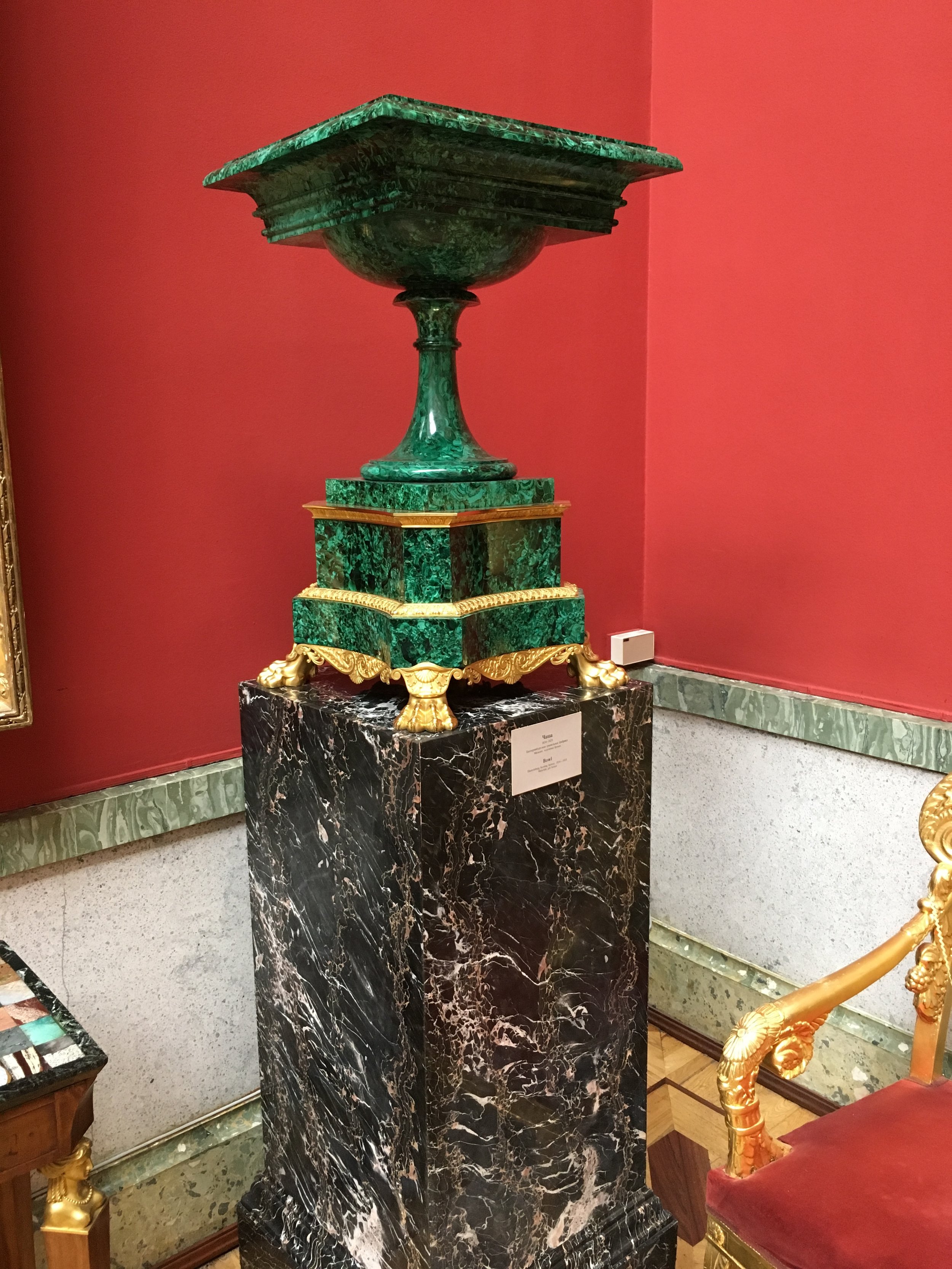Monumental Russian Empire Style Vases at the Hermitage
The State Hermitage Museum possesses an impressive collection of monumental vases made of Russian semi-precious stones mounted in gilt-bronze. “These vases took years to produce. Once the stone had been selected - rich dark-blue lapis lazuli, jasper, pink rhodonite or various porphyries from the Ural Mountains - a craftsman would begin the work of turning the stone to designs set by the Tsar's Imperial Cabinet. Often, these designs would be the work of the foremost architects of the day. When the vases were completed they were exhibited on the Jordan staircase of the Winter Palace at Christmas and Easter. The Tsar would pick the pieces he wanted and the rest were given away as gifts. Among the most treasured of these vases were those made of lush green Russian malachite, created in a laborious mosaic technique.”(1)
These vases are also extremely heavy and therefore, difficult to move. During the second world war, as the Nazi troops started to bombard Leningrad, most of the contents of the Hermitage were heroically packed and evacuated by the museum’s staff. It was an incredible accomplishment for a very reduced number of people. During the first ten days after Hitler’s forces started the invasion of Russia, the staff of the museum aided by soldiers and sailors packed half a million pieces of art. The entire number of objects was estimated to be of over 2.5 million.(2)
Those pieces of art that could be evacuated were then transported to the Urals. Amongst those objects that could not be moved were these extremely heavy stone vases. There are pictures today at the Hermitage which show the rooms without windows, damaged floors, destroyed ceilings with snow coming into the exhibition halls and these vases still standing in the middle of this destruction. For us, those images show the permanence and endurance of these monumental vases. They are a sign of the fortitude that kept the museum, its staff and the population of Leningrad resisting the attacks that were to last for several years.
These magnificent stone vases that we admire today at the Hermitage tell us a lot of history and makes us look at them with respect and admiration.
(1) Burton Holmes Travelogues
Volume Eight, 1914
The Travelogue Bureau
(2) Protecting the Art of Leningrad: The Survival of the Hermitage Museum during the Great Patriotic War Lane Bailey Ouachita Baptist University. 1997
Vase in "The Medici" Form
Russia, 1830
Title: Vase in "The Medici" Form
Place of creation: Russia
Manufacture, workshop, firm: The Peterhof Imperial Lapidary Works
Date: 1830
Material: malachite, bronze
Technique: mosaic work, cast, chasing, gilding
Dimensions: height: 200,0 cm; height of the vase 62,0 cm; width 47,0 cm
